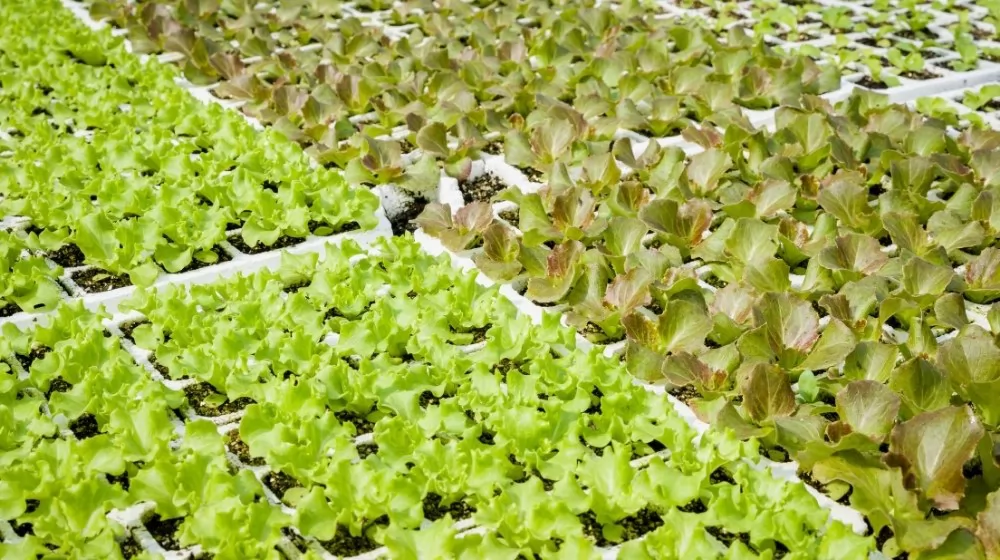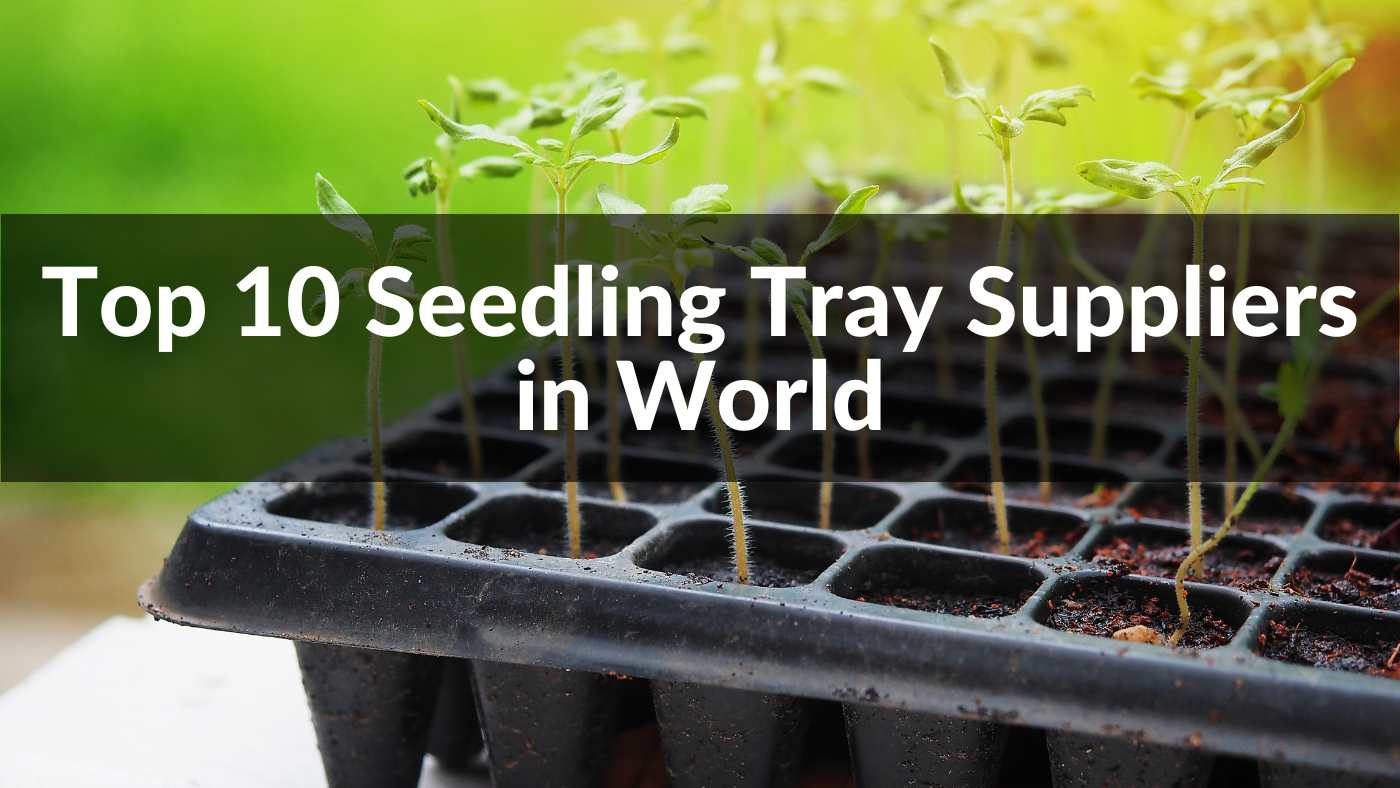
Welcome to the comprehensive guide on choosing the right Seed Starting Cell Trays for your gardening journey. Whether you're a seasoned gardener or just beginning, understanding the nuances of different Seed Start Trays and their impact on your plants is crucial. In this article, we delve deep into various types of trays, including Reusable Seed Start Trays, and how they cater to different seed types and environmental factors. Let's embark on this green journey together, ensuring your seeds have the perfect start.
As we delve into the world of gardening, one key aspect stands out prominently: the importance of selecting the right Seed Starting Trays. This decision is pivotal for several reasons, each contributing significantly to the success of your gardening endeavors.
Firstly, the right seed starting tray ensures optimal growth conditions. These trays, designed specifically for seed germination, offer a controlled environment where moisture, temperature, and other factors can be finely tuned. This precision plays a crucial role, especially when dealing with delicate or fussy seeds that require specific germination conditions.
Another aspect to consider is the material and durability of the tray. Reusable Seed Start Trays not only offer an eco-friendly option but also provide long-term cost efficiency. Made from sturdy materials, these trays can withstand multiple growing seasons, making them a wise investment for both hobbyists and professional growers.
Moreover, the design of the tray plays a significant role. A well-designed Seed Start Tray will have features like proper drainage, adequate space for each seed, and ease of transplanting seedlings. These features ensure that seeds have the best possible start, leading to healthier and more robust plants.
Choosing the right type of Seed Starting Tray is critical for your gardening success. There are various types available, each with its unique features and benefits. Let's explore some of the most common types of seed starting trays.
Plastic trays are widely popular due to their durability and reusability. They are typically lightweight and cost-effective, making them a great choice for both beginners and experienced gardeners. The plastic material retains moisture well, which is essential for seed germination. However, it's important to ensure they have good drainage to prevent waterlogging.
For those who prioritize environmental sustainability, biodegradable trays are an excellent choice. Made from organic materials like peat, coconut coir, or paper pulp, these trays decompose naturally in the soil. This feature eliminates the need for transplanting, reducing root disturbance and the stress it can cause to young seedlings.
Reusable Seed Start Trays are ideal for gardeners looking for long-term solutions. These trays are made from robust materials like heavy-duty plastic or silicone, designed to be used season after season. Investing in reusable trays can be cost-effective over time and is a practical choice for regular gardeners.
Seed starting trays come in various sizes and depths to accommodate different types of seeds and plants. Smaller cells are perfect for limited spaces or for seeds that require a more compact growing environment. Larger cells, on the other hand, are suitable for bigger seedlings or plants that need more room to grow.
Small cell trays are a boon for gardeners with limited space. They are compact yet efficient, allowing for a high density of plants in a small area. These trays are particularly useful for starting seeds indoors or in small greenhouses.
For larger seedlings, trays with bigger cells are essential. These provide ample space for the roots to grow and develop, which is crucial for the healthy growth of plants like tomatoes, cucumbers, and peppers. Large cell trays help in growing robust and healthy seedlings ready for transplanting.

Choosing the correct size for your Seed Starting Cell Tray can greatly influence the success of your seedlings. The size of the cell in a tray determines how much room the roots have to grow, and this can vary depending on the type of plants you are growing.
For most vegetables and flowers, standard-sized cells are sufficient. These typically measure around 1.5 to 2.5 inches in depth and width. This size provides enough space for the roots to grow for a few weeks before transplanting is needed.
However, if you’re starting plants that have larger roots or require a longer time to germinate, like tomatoes or peppers, consider using larger cell trays. These larger cells will give the roots more room to expand and can help prevent the plants from becoming root-bound, which can stress the plant and stunt its growth.
Conversely, if you're limited in space or just starting small seeds that don’t require much root space, like lettuce or herbs, you might opt for trays with smaller cells. These trays allow you to maximize the number of seedlings you can grow in a limited area.
It's also worth considering the depth of the tray. Deeper cells allow for more robust root development, which can be particularly beneficial for root vegetables or plants that are to be transplanted at a more mature stage.
When selecting the appropriate Seed Starting Trays, it's crucial to consider the type and size of the seeds you plan to grow. Different seeds have unique requirements that influence the choice of trays and cells.
Larger seeds, such as beans, squash, or cucumbers, require more space for both the seed itself and its root system. For these types of seeds, larger cell trays are generally more suitable. They provide ample room for the seed to germinate and the roots to grow without becoming cramped or tangled.
On the other hand, smaller seeds like lettuce, carrots, or petunias, can be sown in trays with smaller cells. These seeds don’t require as much space for germination and early root growth. Smaller cells allow for a more efficient use of space, especially when starting a large number of plants.
The seed type also dictates the best practices for sowing. Some seeds, particularly those that are fine and tiny, are best sown on the surface of the soil with a light covering of vermiculite or fine compost. Others, like larger, hard seeds, might benefit from being planted at a greater depth to facilitate better germination conditions.
Another consideration is the germination time and the plant's growth rate. Fast-germinating seeds that quickly grow into large seedlings may require more frequent transplanting or larger initial cells to accommodate rapid root development.
Environmental factors play a crucial role in the germination and growth of seeds. Understanding the differences between indoor and outdoor germination, as well as the impact of climate, is essential for selecting the right Seed Starting Trays and ensuring successful plant growth.
Germinating seeds indoors allows for greater control over the growing environment. Factors like temperature, humidity, and light can be managed more effectively, leading to higher germination rates and healthier seedlings. For indoor germination, trays that retain moisture well and fit into your growing space are ideal.
Outdoor germination, on the other hand, exposes seeds to natural elements. This can be beneficial for some hardy species that require temperature fluctuations for germination. However, it also introduces variables like weather changes and pests. For outdoor germination, choose durable and weather-resistant trays.
The local climate significantly influences seed germination. Warmer climates can accelerate germination and growth, while colder climates may require additional heat sources or insulation to maintain an optimal germinating environment. Understanding your local climate helps in choosing trays that cater to specific environmental needs.
In areas with high humidity, trays that offer good air circulation and drainage are crucial to prevent mold and root rot. In drier climates, trays that help retain moisture can be more beneficial, reducing the need for frequent watering.

In today's environmentally conscious world, the sustainability of gardening practices is increasingly important. Reusable Seed Start Trays have emerged as a popular choice among gardeners looking for eco-friendly options. But are they truly a sustainable choice? Let's explore their benefits and impact on the environment.
Reusable trays, typically made from sturdy materials like heavy-duty plastic or silicone, offer longevity that disposable trays can't match. By using these trays multiple seasons, you reduce waste and the need for constant replacement, which is beneficial for both your wallet and the environment.
The durability of these trays also means they can withstand the rigors of repeated use, including washing and sterilization, which is essential to prevent disease spread among plants. This longevity reduces the environmental impact associated with manufacturing and disposing of single-use trays.
However, it's important to consider the material from which these trays are made. Some plastics, for example, may not be recyclable and could eventually end up in landfills. Choosing trays made from recyclable or eco-friendly materials can further enhance their sustainability.
For home gardeners looking to start their seeds effectively, choosing the best plug trays is crucial. Plug trays, known for their individual cells for each seed, offer an organized and efficient way to grow multiple seedlings. Let's look at some of the best options for home gardens.
Firstly, consider the material of the tray. Durable plastic plug trays are a popular choice, as they are long-lasting and often reusable. For those seeking environmentally friendly options, biodegradable plug trays made from organic materials like peat or coconut coir are excellent alternatives.
The number of cells in a tray is another important factor. Home gardeners typically don't need the large number of cells that professional nurseries might use. Trays with 50 to 100 cells are usually sufficient for a home garden and allow for a variety of plants to be started.
The depth of the cells should also be considered, especially if you plan to grow plants with deep root systems. Deeper cells will accommodate these plants better, allowing for healthier root development.
Lastly, the design of the tray can play a role in your decision. Some plug trays feature raised ridges at the bottom to facilitate better drainage and air circulation, which are key factors in preventing root rot and promoting healthy seedling growth.
For large-scale market gardens, selecting the right cell plug tray size is a critical decision that can significantly affect planting efficiency and crop yield. Let’s explore the factors that make a plug tray size ideal for large-scale operations.
When it comes to large market gardens, efficiency is key. Trays with a higher number of cells allow for the cultivation of more seedlings per tray, maximizing space and reducing the labor needed for planting and maintenance. These trays are ideal for crops that are transplanted as small seedlings, such as lettuce or herbs.
However, the cell size should not be so small that it hinders the growth of the seedling or requires too frequent transplanting. A balance must be struck between the number of cells in a tray and the size of each cell to ensure that seedlings have enough room to develop healthy root systems before transplanting.
For crops that need more room to grow, such as tomatoes or peppers, trays with fewer but larger cells are preferable. These allow for longer periods of growth within the tray, leading to stronger and more robust seedlings ready for transplanting.
Durability is also a significant factor for large-scale operations. Trays must be sturdy enough to withstand repeated use and handling, especially when dealing with a high volume of plants. Investing in high-quality, durable trays can reduce long-term costs and improve operational efficiency.
As we conclude our journey through the world of seed starting, we hope this guide has illuminated the path to selecting the ideal seed starting trays for your garden. Remember, the right start can lead to a flourishing garden. For those seeking the pinnacle of quality and sustainability in their seed starting endeavors, look no further than Linkwin, China's leading manufacturer of Seed Starting Trays. Discover the difference that professional-grade trays can make in your garden today.











We use cookies to make the website work, to provide advanced features, social media and traffic analysis, and we use analytics and third-party advertising cookies. If you choose to click "Deny All", you will retain the default setting of not allowing the use of cookies or other tracking tools other than technical tools.

